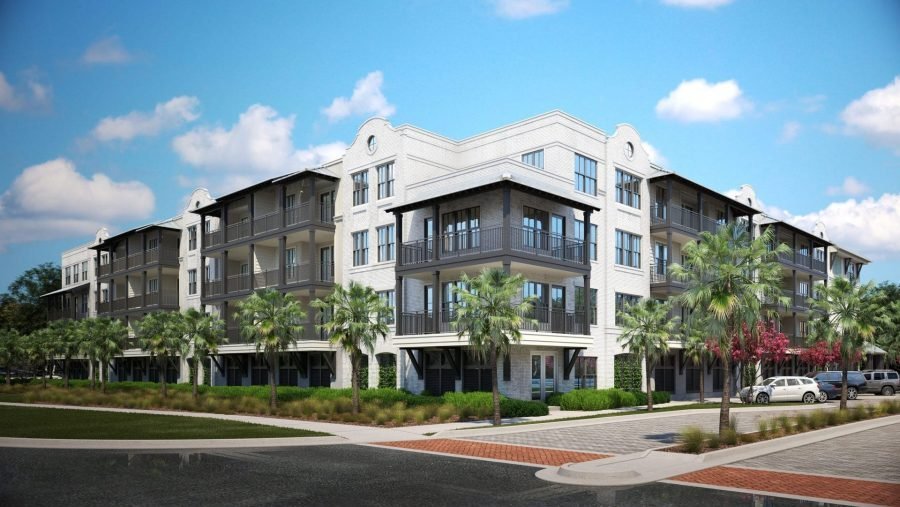
- calendar_month October 25, 2022
The L.A. apartment market has witnessed notable improvements since the beginning of 2021 after experiencing the worst conditions in 2020 in over a decade. Vacancies have been trending down since peaking at the end of 2020 and are currently 3.5%. Demand, after a record-breaking 2021, has moderated in 2022 but remains historically strong. Gains in the market have been broad-based, as almost every location in the metro has seen solid occupancy gains. Los Angeles has lagged the nation with respect to rent growth since the onset of the pandemic. Rents recovered to pre-pandemic peaks in May 2021, whereas the nation achieved that milestone in January 2021. Record-level gains were seen during most of 2021 and the first half of 2022. However, asking rents peaked in August 2022 and have since been starting to decline, following the trend of most other markets nationally.
Los Angeles has seen elevated construction levels for years and still has a sizable pipeline, 28,000 units, that needs to be absorbed in the near to mid-term. Current construction levels represent 2.8% over existing inventory. Development activity is concentrated in specific areas that are more receptive to additional density, like Downtown Los Angeles and Koreatown. Recent transaction activity has been robust and demonstrates investors are active in L.A.'s apartment market and willing to stomach some of the highest pricing and lowest cap rates in the nation. Many of the major apartment properties that have recently sold involved public/private partnerships that acquired newer market-rate apartments to convert to communities restricted to middle-income renters.
Vacancy
Although year-to-date apartment demand has moderated from a record-breaking 2021, net absorption of units remains favorable relative to average absorption levels. Vacancy today, at 3.5%, is at its lowest levels in decades and a dramatic improvement from the most recent peak of around 6.0% in late 2020. Current levels are also below historical averages: Over the past 20 years, vacancy in the L.A. metro has averaged 4.4%.
Suburban locations, including the Antelope Valley and many spots in the San Fernando and San Gabriel valleys, saw occupancies hold up better earlier on in the pandemic. These locations have benefited from relatively affordable units and less competition from new supply. Conditions in these submarkets remain strong, but today submarkets that fared worse in 2020, primarily more expensive areas of town with elevated construction pipelines, like Downtown Los Angeles and Santa Monica, saw considerable improvements in occupancies during 2021.
Current vacancies in higher-quality, 4 & 5 Star properties, 6.6%, are elevated relative to lower-quality properties. Vacancies in 3 Star and 1 & 2 Star properties are currently 3.2% and 2.9%, respectively. A spread always exists between the quality segments, primarily driven by the fact that most new construction comprises higher-quality communities and fewer renters in the metro can afford top-tier rents. In late 2020, the disparity was the highest seen in at least two decades, as a greater proportion of renters in this class segment moved out of higher-end properties. The spread compressed dramatically during 2021.
L.A. has one of the highest percentages of renters of any U.S. metro, with roughly half of all households renting their homes. Elevated home prices force many residents to rent out of necessity. It takes an income well above the median household income for the metro to comfortably afford a median-priced home.
Looking ahead, market vacancy is anticipated to remain near record lows for the near to mid-term, as tenant demand is forecast to be relatively strong. The supply pipeline, while a concern for specific submarkets of the metro, should have a limited aspect on market-wide occupancies.
Rent
Average asking rents peaked in August 2022 and have been in decline since. Rent growth on a year-over-year basis remains historically strong, at 4.3%, but it looks like the record pace of gains seen in 2021 and the first half of 2022 are a thing of the past. This mirrors the trend currently seen across most major U.S. markets. Average asking rents in L.A. presently stand at $2,180/month.
Los Angeles has been a laggard with respect to rent movements since early 2020. Losses were more pronounced than in most markets nationally in 2020, and gains in 2021 and the second half of 2022 were more modest than most markets nationally. Many Sun Belt markets, particularly in Florida and Texas, were the top performers during these years.
It's important to understand how rental rate performance has been stratified during the past several years. Considering asset quality, losses during the early stages of the pandemic were most pronounced in higher-end, 4 & 5 Star properties versus lower-quality communities, as tenants migrated to more affordable housing options inside and outside of the metro. From a location standpoint, more affordable apartment locations, including the Antelope Valley and many pockets in the San Fernando Valley and San Gabriel Valley, generally outperformed with respect to rent growth.
Rent regulations in the L.A. apartment market and their potential impact on tenants and investors are important to consider. Assembly Bill 1482, which took effect at the start of 2020, limits yearly rent increases across all of California to 5% plus the cost of inflation for the next 10 years and strengthens renter protections against eviction. The L.A. County Board of Supervisors also voted unanimously to implement permanent rent control for buildings built before 1995 in unincorporated parts of the county in 2019.
In November 2020, Californians voted no on Proposition 21 by a 60%-40% margin. The bill sought to eliminate the statewide Costa-Hawkins Act, which places limits on rent control. A similar bill from the same group of backers was defeated in 2018 by a roughly 3-2 margin.
Construction
The Los Angeles apartment market witnessed 8,800 net new units deliver during the past 12 months. In 22Q3, Related California completed the mixed-use The Grand in Downtown Los Angeles across from the Disney Music Hall. Development had been stalled for over a decade due to a lack of financial backing and finally commenced construction in 2019. The development includes over 430 units, with 20% of the units earmarked for incomequalified renters. A 300-plus-room hotel and 175,000 SF of retail are also a part of the development. Average asking rents currently stand at over $4,100/unit.
There are 28,000 market-rate units under construction in Los Angeles County, representing 2.8% of existing inventory. Relative to the market's history, the number of units underway is elevated and is near peak levels seen during the past two decades. Developers have continued to break ground on projects in recent quarters. 2021 saw the most construction starts in a year since 2016.
Looking at current construction levels, submarkets Downtown Los Angeles, Burbank, and Koreatown have the most apartment units currently under construction relative to the area's existing inventory. With the exception of Burbank, these submarkets have been construction hotspots for years, as these submarkets are among the few areas in the metro that are receptive to greater density.
Burbank, in contrast, usually sees minimal construction levels. Burbank's activity is driven by two projects, 777 N Front St. (573 units) and First Street Village (325 units). 777 N Front commenced construction in June 2021 and First Street Village in late 2020.
High construction costs, NIMBY sentiment, anti-density politics, and onerous permitting processes make it difficult to develop new communities in most areas of Greater Los Angeles. Despite Los Angeles seeing elevated apartment construction relative to the past two decades, the market has been chronically undersupplied for years when it comes to housing, especially affordable housing.
Given elevated construction costs, higher-end communities are often the only development opportunities that pencil out. For example, Los Angeles saw 8,800 new apartment units added during the past 12 months. 7,000 of units that were completed during that time were in high-end, 4 & 5 Star communities.
Sales
Multifamily transaction activity during the last 12 months in Los Angeles, $13.9 billion, was strong, above historical averages, and demonstrates ample investor demand for the property type. This demand has translated in strong recent price appreciation. Looking at notable recent sales, in August 2022, California Home Builders acquired Modera West LA from Mill Creek Residential for $230.66 million ($617,000/unit) at a 3.6% in-place cap rate. Mill Creek developed the 2018-built, 374-unit community in Westchester. Upon acquiring the property, California Home Builders rebranded the community The Q Playa.
In June 2022, Stockbridge Capital Group purchased The Behay in Historic Filipinotown from Trammell Crow Residential for $137.75 million ($689,000/unit). The sale represents a record for the area on an absolute and perunit price basis. The 200-unit, 2020-built community also has 24,000 SF of ground-floor retail, including a Target.
Several of the largest recent transactions in L.A. have involved public/private partnerships purchasing newer market-rate apartments to convert to communities restricted to middle-income renters, those making 60%120% of median area income. In a recent example of such public/private partnership, in February 2022, the California Statewide Communities Development Authority (CSCDA) partnered with Faring to purchase The Crescent at West Hollywood from Apartment Income REIT for $100 million ($769,000/unit). The 130-unit community is at 1274 N Crescent Heights Blvd. The CSCDA owns and financed the acquisitions with taxexempt financing. Faring will oversee operations at the property.
Other notable large transactions executed under this structure have closed since early 2021 in Carson (Union South Bay), Glendale (Altana Apartments, Brio, Next on Lex, and Towne at Glendale), Hawthorne (Millennium South Bay), Long Beach (Oceanaire), Monrovia (Moda at Monrovia Station), Pasadena (Residences at Westgate, The Hudson, Westgate Apartments), Pomona (Monterey Station, 777 Place), and Sun Valley (Villa Del Sol Apartments).
Average market pricing, at $420,000/unit, is well above the national average of $260,000/unit. Average market cap rates, at 4.0%, are well below the U.S. average of 5.0%. Key drivers of the market's elevated pricing include the metro's position as the second-largest metro in the nation, diverse economic drivers, and a land-constrained coastal location.
